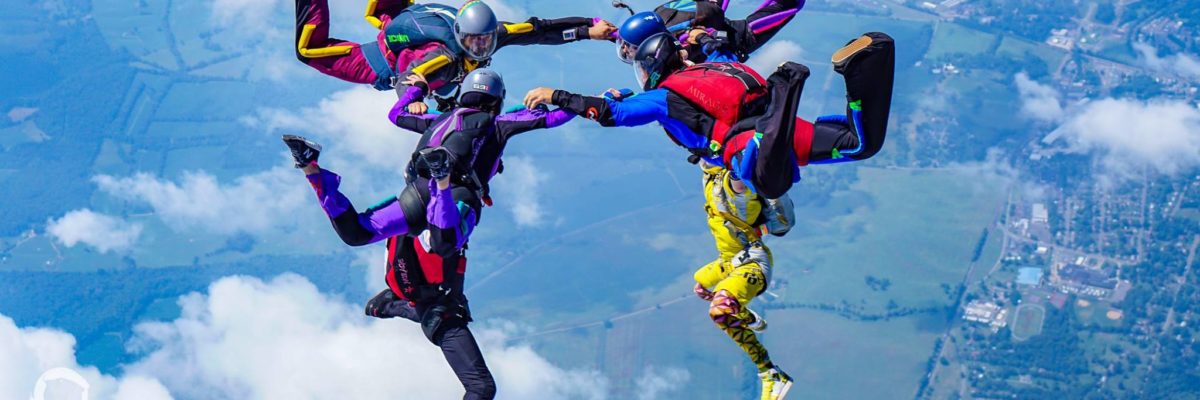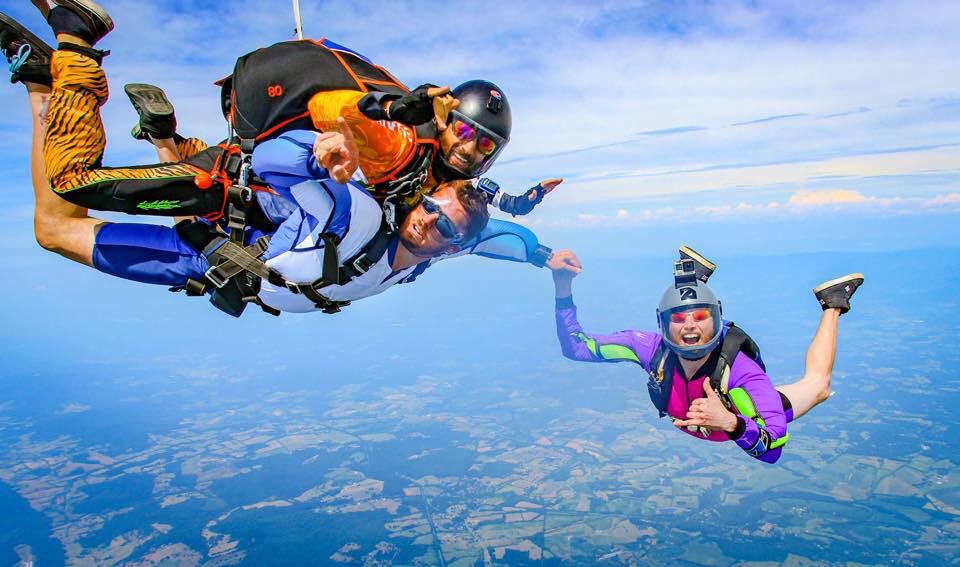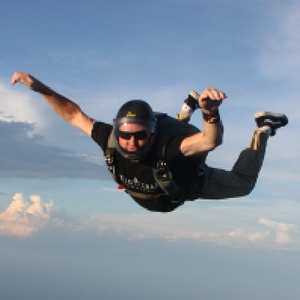
What Is Safer: Skydiving or Driving?
Friday, June 7, 2024
- Skydive Orange
- 6/07/24
- 0
- General
Most of us drive nearly every day, yet some of us don’t think twice when getting behind the wheel. We spend a good bit of our day driving … to work, to the grocery store, and even to the dropzone!
Almost no one is terrified of making their daily commute. But if you mention skydiving, many people – even those who frequently swerve slightly because their eyes are on their phone or they’re knee-driving to pick the perfect song – will get up in arms about just how dangerous it is to skydive. So, is skydiving safer than driving? Let’s look at the most up-to-date driving and skydiving statistics!
Is Driving Dangerous?
Because we have done it so often, driving has become another part of the routine just as much as drinking a morning cup of coffee or brushing our teeth. This act we commit without half a thought remains one of the top 10 causes of death in the United States and affects all socioeconomic categories, age groups, and ethnicities without discretion.
According to the National Safety Council (NSC) Injury Facts, there were an estimated 46,027 motor-vehicle crash deaths in 2022 with a 13.81 fatality rate per 100,000 population. (As of this date, the 2023 statistics are not available.) In 2021, they calculated that the odds of dying in a motor vehicle crash is 1 in 93.
Is Skydiving Dangerous?
The United States Parachute Association (USPA) has been collecting data regarding skydiving safety since 1961. These skydiving stats reveal that safety is consistently improving over time.
In 2023, USPA member skydivers reported making 3.65 million jumps in total. Ten of these jumps resulted in a skydiving fatality – making the skydiving fatality rate 0.27 per 100,000 jumps (1 in 370,000). This is the lowest fatality rate on record in the history of skydiving.
It’s important to note that these numbers are specific to experienced skydivers. The majority of skydiving incidents and fatalities are caused when experienced skydivers push their limits and/or use improper judgment while landing a perfectly functioning parachute. Contrary to popular belief, it is not equipment malfunction that is the typical cause of skydiving injuries and fatalities.

Is Skydiving Safer Than Driving?
Statistically speaking, driving a motor vehicle is more dangerous than skydiving. It’s important to note that we are not, however, calling skydiving safe. Skydiving is an extreme sport that involves very carefully calculated risks.
Thanks to consistent improvements to skydiving gear and technology accompanied by continuing education and thorough training – skydiving is statistically safer today than it has ever been. Let’s look at USPA stats from the last 15 years to get a sense of the trend in the numbers:
| Year | USA Fatalities per 100,000 Jumps |
| 2023 | 0.27 |
| 2018 | 0.39 |
| 2013 | 0.75 |
| 2008 | 1.15 |
What is the Safest Form of Skydiving?
For years, USPA reports have shown tandem skydiving to have the fewest number of accidents and fatalities. A tandem skydive is when a first-time jumper – or novice – skydives while harnessed to a certified skydiving professional. Over the past decade, the average safety rate for tandem jumps has been one student fatality per 500,000 jumps. In 2023, there were zero tandem skydiving fatalities in the US.
This is because our industry’s tandem instructors are certified professionals who are dedicated to going above and beyond to ensure a successful skydive for all tandem students. To obtain a tandem instructor rating, individuals are required to have at least three years in the sport, complete a minimum of 500 skydives, and complete rigorous coursework and testing requirements to receive a tandem instructor (TI) rating.
Most of our instructors at Skydive Orange have over a thousand jumps, and several have many THOUSANDS!
What is Riskier than Skydiving?
If we look at the odds of dying statistics provided by the National Safety Council, there are far more things that are technically “riskier” than skydiving. Here are just a few:
- Choking on Food: 1 in 2,659
- Dog Attack: 1 in 53,843
- Hornet, Wasp, and Bee Stings: 1 in 54,516
Seize the Day!
Let’s be real, living a risk-free life is impossible! Everything comes with a certain amount of risk, even lying in your bed for the rest of your life! The important takeaway is that you shouldn’t cancel fun and stifle your growth because of the risks associated with adventure.
Fear is a natural and normal human feeling that shouldn’t be avoided at all costs. Accomplishing amazing things and pushing the limits of fear has shown to improve confidence and self-esteem, and give you a tremendous sense of empowerment. Taking calculated risks and the enriching experiences that come with them are what make life worth living.
Leave your fears in the airplane and allow yourself to feel all of the phenomenal benefits of skydiving that are sure to nourish your soul and inspire a bountiful life. Come jump with us at Skydive Orange and live it up! Blue skies.
The largest tandem skydiving center near Northern Virginia, Washington D.C. and Maryland.
Copyright © 2024, Skydive Orange, All Rights Reserved.
DropZone Web Design & Marketing by Beyond Marketing, LLC



